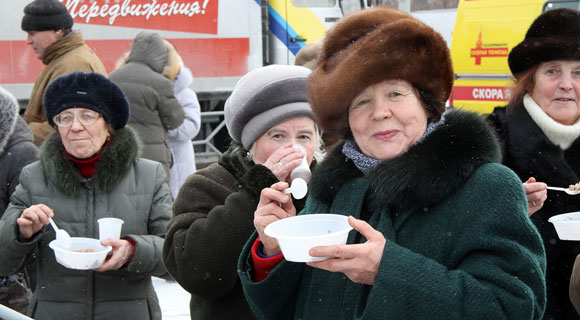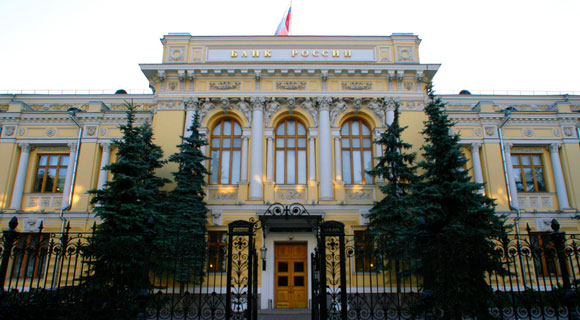Putin’s Tricks
#1 Break the piggy bank
It would be naïve to think that Putin’s Kremlin will leave any financial reserves behind in its wake. All available resources will be spent on remaining in power for as long as possible. The opposition, which wants to oust the regime, should be prepared to deal with a broken budget, zero reserves, and heavy debt burden. It will be similar to the hostile take-over scenario from the corporate world. While on the defensive, the management does everything it can to quit the corporation on a golden parachute, leaving behind a devastated corporate structure.
The legitimate way to finance budget deficit is spending the Reserve Fund, which is currently worth 60 billion USD. The Ministry of Finance has plans to grow its rainy-day fund 4.4% by the end of the year. This is enough to fill in a decent-sized hole in the budget for about a year. Another 85 billion USD are in the National Wealth Fund. Though this fund is not supposed to be spent in the short term, there is little doubt that the government will suck money out of it if needed in order to stimulate the economy or fix the budget.
Overall, the government has accumulated enough savings to finance a budget deficit for two years of low oil prices. On top of that, the government has a lot of room to increase sovereign debt since it is currently next to negligible. Former Finance Minister Alexei Kudrin believes that the government would be better off if it started issuing bonds immediately while the sovereign debt market is still open. In the event of other European nations defaulting on their debt, it would become very difficult for Russia to borrow at any price.
Besides sovereign funds, which are at the government’s direct disposal, there are also the International Reserves of Russian Federation, controlled by the Central Bank of Russia. The amount they hold, 500 billion USD, is excessive any measure. For instance, the Official International Reserves of Canada, another large export economy, are below 66 billion USD. Even in Western countries, central banks now heavily invest in government bonds. If necessary, the Russian government will find a legitimate way to dip its hand into the Central Bank’s pockets as well.
The combination of borrowing and maintaining reserves is enough to smooth over several years of crisis for Putin’s core electorate, which mostly consists of retirees and people otherwise dependent on public sector salaries. However, the Kremlin is likely to be reluctant to spend its reserves all at once.
#2: Break somebody else’s piggy bank
The Russian federal budget subsidizes the national pension system with its deficit amounting to 2.3% of the GDP. To reduce this heavy burden, the Ministry of Finance proposes raising the retirement age. Currently, it is 55 for women and 60 for men. Though this is a sound solution to the pension fund crisis, it probably won’t be implemented any time soon since Putin has repeatedly stated that the retirement age wouldn’t be raised. He knows very well that raising the retirement age can catalyze protests, which is what happened recently in France.
A much more politically secure solution would be to reverse pension reform. Currently, a part of the social tax goes to the old solidarity pension system, which will be paying out the majority of pensions for the foreseeable future. A smaller part is transferred to individual pension accounts and invested in financial assets to fund the future pensions of people under 45. According to one of the proposals currently under consideration, these 6% will be returned to the solidarity pension system and used to pay current pensions.

"The majority of voters were retirees. Many of those who voted for Putin will soon pass away. I carried several people to the second floor in my arms so that they could vote," said 29-year-old Tomsk State University student Denis Karagodin, who observed the presidential elections.
This elegant solution to a pension crisis would minimize the political risks for the ruling party. Older and less well-off citizens, Putin’s core supporters, will benefit from the restoration of the solidarity system. Relatively young, educated middle-class citizens will have to save for their pensions themselves. However, most of them probably won’t see the effects of these unfavorable changes right away. Even more importantly, they rarely vote and are unlikely to vote for Putin and his party anyway.
#3 Drop some ballast
The budget, although loaded with protected payments to government employees and pensioners, has room for yet another maneuver. The grandiose rearmament program could be cut and delayed without any consequences for the economy. In fact, the government has already showed signs of moving in this direction. It might also cut subsidies to utilities, railroads, and housing, as well as some costly capital investment projects. All these measures could be orchestrated with minimal immediate effect on any sensitive social groups.
#4 Raise taxes
Gazprom’s record profit margins provide a good clue for where to look for additional tax revenues. The government might continue to increase taxes on natural gas production and exports.
Though tax rates in Russia are relatively low, the taxpayers’ low income levels prevent the government from extracting much more from them. For example, when raising the marginal rate of compulsory social insurance in 2011 didn’t bring in the anticipated revenues, the government cut back the rate for the next financial year.
The government might try to increase local taxes. Regional governors, who are once again elected by the people, will probably be forced to increase local taxes. To balance municipal budgets, property taxes will be linked to real estate market prices. While gradually introducing these taxes, the government will try to shield the most sensitive social groups with appropriate subsidies.
#5 Devaluation
Unlike the crisis of 2010 when the Central Bank of Russia lost about 200 billion USD of international reserves while trying the support the failing ruble, Russian financial authorities have now embraced the more flexible managed float. The ruble is allowed to fluctuate within a loose and ever-extending margin. Without much intervention from the Central Bank, the ruble has depreciated by over 10% in the past four months. The depreciation will continue if the oil prices continue to fall.

The Bank of Russia (or the Central Bank of The Russian Federation) is Russia's main federal bank. Its functions are described in the Russian Constitution (Article 75) and in the Federal Law on the subject. The Bank of Russia was founded on July 13, 1990, on the basis of the Russian Republic Bank of the State Bank of the USSR. Its history can be traced back to the State Bank of the Russian Empire.
Devaluation will compensate for the decline in raw materials prices. Nominated in rubles, export revenue will change less because for each dollar, exporters will receive more rubles. Consequently, tax revenues from exports will also decrease, although not as much as prices for natural resources.
Devaluation won’t have much of an effect on Putin’s core electorate, which chiefly consumes cheap local goods. The resultant spike in inflation might be negligible because of the imports’ insignificant share in the consumer price index (CPI) basket. Most food, which constitutes the major component of Russia’s CPI basket, is produced within the country. Russia’s economic reaction to the 2009 devaluation was a 50% import drop and no inflation. At the same time, the cheap national currency will be a natural protection for some industries (i.e. the automotive and heavy machinery industries). These industries might increase their share on the domestic market by taking the place of more expensive import goods.
#6: Hands-on management
To curb the rise of social unrest, in 2008-2009, the Russian government provided cheap credit and tax breaks for anchor companies in cities with narrow economic specializations in exchange for the companies not laying off their work forces. There were several televised cases of Putin himself arriving (by helicopter) to struggling cities and resolving local crises with seemingly brutal renunciations of local oligarchs, although in fact he was often propping them up with cheap credit and government privileges.
To Putin’s credit, he made a number of advancements in resolving the crisis in the biggest Russian city with a narrow economic specialization. Tolyatti, an automotive city on Volga with a population of 700 thousand, has long been the site of economic unrest and shows the lowest election results for the ruling United Russia party. AvtoVAZ, the flagship of the Russian automotive industry, whose headquarters are in the city, received generous public financial support in recent years, hired a new professional management team, reduced its excessive work force, and developed several less clunky car models. The plant is now owned by the Renault-Nissan alliance and the city’s mayor is affliated with the opposition movement—a pretty rare case for contemporary Russian politics. If something goes wrong there, the international company and the independent mayor will be held accountable, and not Putin’s administration.
Another one of Putin’s signature tricks of hands-on management is personally making deals with European leaders and the CEOs of international companies. Although the current state of the financial markets doesn’t favor Russian assets, Putin might succeed in selling blocks of state-owned companies to international oil and mining behemoths who are used to dealing with authoritarian regimes. Besides personal guarantees from Russian leaders, international investments are likely to be protected by sophisticated deal structures, with reliable collateral on each end. Such structures will help overcome foreign investors’ justified mistrust of the Russian government.

